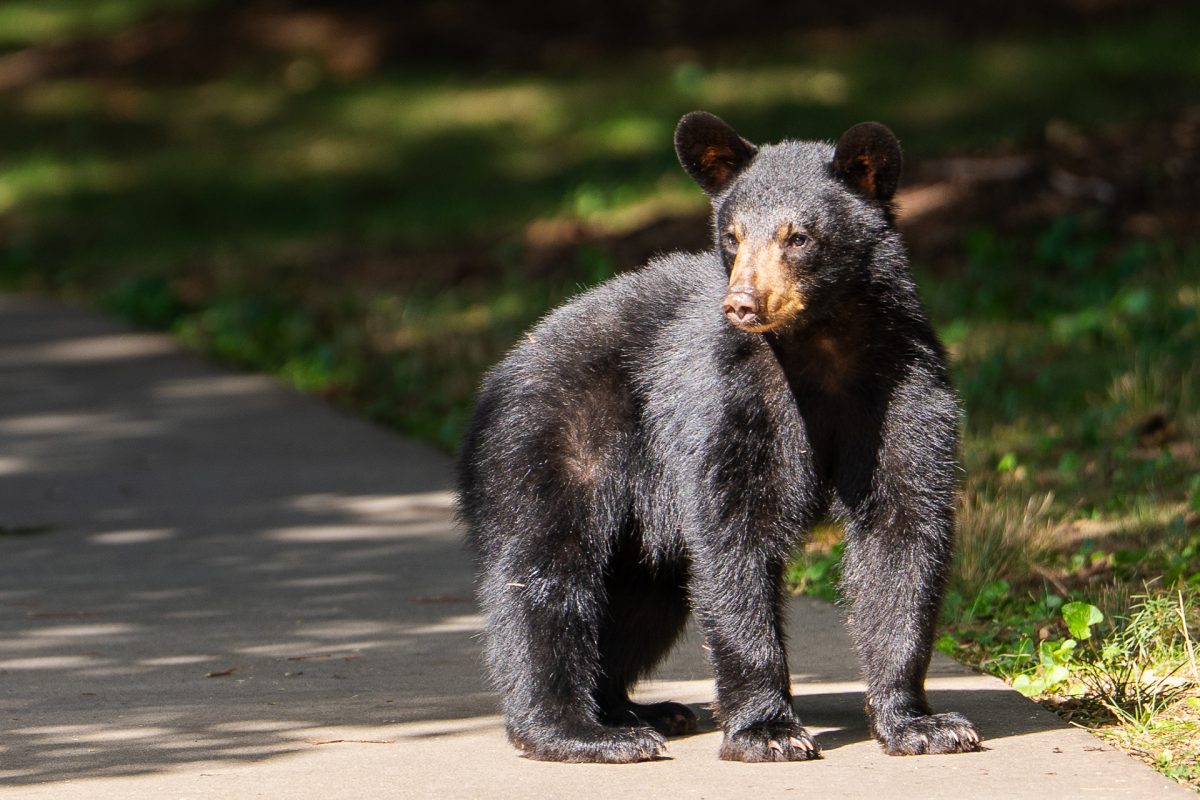Eliza Hill
Arts & Features editor
[email protected]
George Masa left behind life in Japan in 1901, setting off to America and arriving in Asheville in 1915. His stewardship toward nature and otherworldly photography skills would help shape and conserve the Great Smoky Mountain National Park, leaving behind a legacy that transcends his physical life, said Paul Bonesteel, director and writer of the documentary titled The Mystery of George Masa.

“He fell in love with the mountains and in the 18 years before he died, he accomplished a tremendous amount,” Bonesteel said.
According to Bonesteel, a job opportunity at The Grove Park Inn led Masa to Asheville, but the scenery and environment enticed him to stay. Beginning as a laundry worker at the inn with a dedication to the environment, surreal photographs of the land and fascination with the Smoky Mountains, Masa’s efforts proved instrumental in the movement to preserve the land as a national park.
“When he was in New Orleans, he heard about The Grove Park Inn and came up here on the urging of an employment agency in New Orleans and he interviewed the manager there and got the job,” Bonesteel said. “So, he came to the mountains more for personal, economic reasons than because he’d heard about the mountains.”
Professor of history at UNC Asheville Dan Pierce, said Fred Seeley, a boss at The Grove Park, helped Masa establish a photography business in Asheville, despite speculations that Masa could be a spy.
“Fred Seeley, who was the manager of The Grove Park Inn and a big patron of Masa, was also involved in the Committee of Public Information during WWI. He had suspicions. He just kind of appeared in Asheville and no one ever really got a good explanation as to why he ends up in Asheville, goes to work as a bellhop at The Grove Park Inn and then he becomes kind of a favorite of the avid hikers,” he said.
Pierce said Masa graciously set business in motion and the images he produced in his studio remain epochal to Asheville and the greater mountainous area.
“He became a professional photographer and one of the most important ones in Western North Carolina,” Pierce said. “Back then a lot of photographers, particularly in places like Asheville, made their money by converting their photographs into postcards. He would colorize his pictures and turn them into postcards and sell them. Some of them are very iconic images. In fact, one that I’m very familiar with is an image of two moonshiners next to a still.”
Bonesteel said Masa’s photography business thrived during the 1920s among other bustling businesses in Asheville. Over time, he ran several studios Downtown and in Biltmore Village. Masa soon merged his notable photography skills with his life on the trail to promote the Great Smoky’s value and beauty, helping combat the damage done by tree harvesting at the time.
“As he ran that successful photography business, the artist in him and the explorer became very involved in the mountains and the trail culture that was emerging during that time,” he said. “So, his mission became—as he saw a lot of the land that was being damaged by tree harvesting—to do what he could to preserve it, and the Great Smoky Mountain National Park movement was sort of the biggest central way that he could participate in that preservation. So he got involved photographically and also promotionally.”
Masa soon joined forces and formed an unbreakable friendship with writer and naturalist Horace Kephart, author of Our Southern Highlander. Bonesteel credited their collaboration as crucial and instrumental in preserving the Great Smoky Mountains.
“Their friendship and collaboration has been decided as—not the only—but one of the most important contributions to the movement by artists and writers, versus bureaucrats,” he said.
He said Kephart fled from his troubles in New York, retreating to a remote life in Swain County..
“Kephart is a long story in himself,” he said. “He was from Upstate New York and ended up moving to the Smokies, I think around 1910 or so, for a lot of personal reasons. His life sort of fell apart and he escaped to the Smokies. He was an expert camper and explorer. He wrote the book called ‘Camping and Woodcraft,’ all about basically how to camp and how to be efficient in the woods.”
Local historian Laura Blackley said Masa’s intimate knowledge of the area and Kephart’s ardor for nature and literature made them a powerful team.
“He’s kind of a philosopher guy. When you think about John Muir and people that just spend hours and hours and days out in the wilderness. He studied it and had taken these beautiful photographs and convinced people to open their hearts and their wallets,” she said.
Blackley said Masa may lack credit for some of his contributions he devoted his life to. Visitors from around the world flock to Great Smoky Mountain National Park to appreciate the area’s pristine beauty, which Masa and Kephart helped preserve.
“Just the volume and amount of work and energy and passion he put into everything he did, and to still be so under-sung. I don’t know if that’s just because he was a private person by nature, because everything else would suggest that he was,” she said. “I just think he was one of those people where you don’t realize the contributions he’s made until after he’s gone.”
Swain County native and Kephart enthusiast Luke Hyde works as an innkeeper at the Historic Calhoun Hotel in Bryson City, home of his Horace Kephart Library. Alongside Kephart’s great-granddaughter Libby Kephart Hargrave, Hyde founded the Horace Kephart Foundation.
He said Kephart and Masa both helped name many natural landmarks in The Great Smoky Mountains during their time on the Nomenclature Committee.
“There was a group called the Nomenclature Committee for the Mountains. And the two of them, among those people who gave names to the different mountains in Western North Carolina, East Tennessee, North Georgia and so on,” Hyde said.
He said Kephart actively participated in the Democratic Party and convinced many political cohorts to support the movement to preserve the Great Smoky Mountains. While working for the Swain County Chamber of Commerce, Kephart wrote brochures promoting and informing people about forming the park.
“When the Rockefeller family saw the pictures that George Masa had taken, it caused them to make a $10 million contribution to preserve the park,” he said.
Pierce said the duo advertised the area’s beauty and worthiness through many outlets and finally brought their mission to fruition. The process proved arduous, as The Great Smoky Mountain National Park was the first park in the Eastern U.S. created from private land.
“Kephart wrote a lot of articles in The New York Times and other places about why this place deserved National Park status and they used Masa’s photographs as evidence for why it deserved National Park status,” he said. “It was a complicated process where the federal government would not provide the funds, but they would accept land that was purchased and then donate it by the states. So North Carolina and Tennessee came together to purchase almost a half a million acres.”
Pierce said Masa helped route most of the Appalachian Trail through North Carolina during his time in the Carolina Mountain Club. With camera equipment over his shoulder, he pushed his self-made odometer for countless miles, carving paths many still love exploring.
“He was a very small individual but he had that thing he was pushing along and had all this heavy camera equipment as well. He was a pretty amazingly fit individual,” Pierce said.
Hyde said Masa’s ingenious invention allowed Masa to clock the miles of each trail and how long it would take to arrive at one peak from another.
“Masa was apparently a great mathematician. He figured out an odometer. He took a wheel off of a small bicycle and made himself an odometer. He would roll it and he could tell what was one mile and a mile and a half. Masa and Kephart were the first ones to measure and map out the route to the Appalachian Trail,” he said.
Bonesteel said Masa suffered grim times when The Great Depression ravaged Asheville. Soon after, Kephart died in a car accident in 1931. Masa’s shrinking income devastated his business and losing his best friend devastated his soul. Although he continued hiking and practicing photography, Masa passed away in 1933.
“Physically, he ended up dying of some sort of pneumonia or tuberculosis in 1933 after Kephart was killed a few years before,” he said. “He was struggling through that, a loss of a friendship, also economic hardship and yet he was still hiking in the rain up mountains, taking photos, promoting the Appalachian Trail. He was going on many cylinders and just ran out of gas.”
While Masa’s Japanese origins remain unclear, Bonesteel continues to research and uncover the mysterious hiker’s backstory as digital and genetic records have developed significantly since he created the documentary in 2002.
“The involvement continues. I’ve obviously moved on and done other stories and documentaries but he’s backing my life and it never really went away,” the director said. “He very quickly became intrigued with the mountains. We think there was some parallel to his landscape where he came from in Japan based on his love for what he found here, but that is among many things we’re trying to prove, if you will, and further research his background. All of that has been something that I’ve been doing for a long time but in the last 20 years, a lot has changed in terms of digital information and scanning documents, DNA and genealogical work.”
Hyde said he reveres Masa and Kephart’s respect for The Great Smoky Mountain’s beauty and their contributions to preserve the area’s magic. The Great Smoky Mountain National Park now stretches mainly through Swain County, Jackson County and parts of East Tennessee, covering over 600,000 acres and attracting millions of visitors every year, according to park data.
“His approach to nature and outdoors corresponds with mine,” Hyde said. “I respect him because he knew that the woods and streams and sky and things in nature are necessary for us as human beings to survive and be happy in the world.”
Bonesteel said Masa’s endeavors serve as the cornerstone for a greater collective effort to conserve The Great Smoky Mountains.
“I do think that the photography that persuaded the Rockefellers to give money to the park played a key role and his work on the Appalachian Trail—the route could be very different. It’s conceivable that it may have been consummated—at least not nearly as quickly,” he said. “I think he made a huge impact on a lot of people and he’s still having that effect through his stories and through his photographs.”


![Brooke Pedersen [second from the right] and Luis Reyes [right] hold banners during the Wrap The Woods event.](https://thebluebanner.net/wp-content/uploads/2025/09/ELIZABETH_PRITCHITT_IMG_3470-1200x804.jpg)



















